
Leslie Claire Margaret Caron is a French and American actress and dancer. She is the recipient of a Golden Globe Award, two BAFTA Awards and a Primetime Emmy Award, in addition to nominations for two Academy Awards.
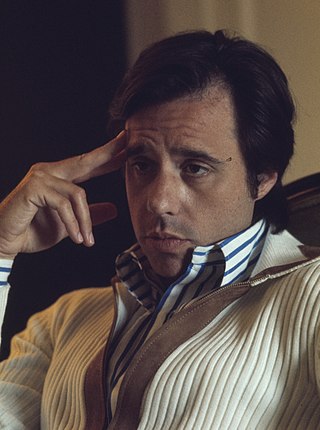
Peter Bogdanovich was an American director, writer, actor, producer, critic, and film historian. He started out his career as a young actor studying under Stella Adler before working as a film critic for Film Culture and Esquire and finally becoming a prominent filmmaker of the New Hollywood movement. He received accolades including a BAFTA Award and Grammy Award, as well as nominations for two Academy Awards and two Golden Globe Awards.
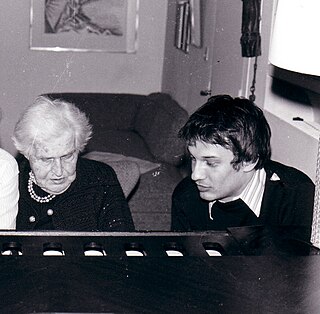
Germaine Tailleferre was a French composer and the only female member of the group of composers known as Les Six.

The Cat's Meow is a 2001 historical drama film directed by Peter Bogdanovich, and starring Kirsten Dunst, Eddie Izzard, Edward Herrmann, Cary Elwes, Joanna Lumley, Jennifer Tilly, and Ronan Vibert. The screenplay by Steven Peros is based on his 1997 play of the same title, which was inspired by the mysterious death of film mogul Thomas H. Ince that occurred on William Randolph Hearst's yacht during a weekend cruise celebrating Ince's birthday in November 1924. Among those in attendance were Hearst's longtime companion and film actress Marion Davies, fellow actor Charlie Chaplin, writer Elinor Glyn, columnist Louella Parsons, and actress Margaret Livingston. The film provides a speculative assessment on the unclear manner of Ince's death.
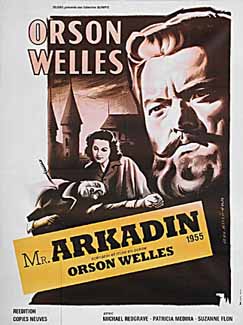
Mr. Arkadin, known in Britain as Confidential Report, is a French-Spanish-Swiss co-production film noir, written and directed by Orson Welles and shot in several Spanish locations, including Costa Brava, Segovia, Valladolid, and Madrid. Filming took place throughout Europe in 1954, and scenes shot outside Spain include locations in London, Munich, Paris, the French Riviera, and at the Château de Chillon in Switzerland.
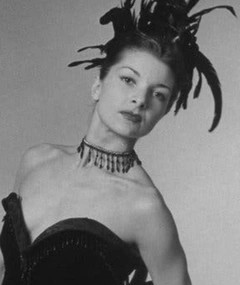
Colette Janine Marchand was a French prima ballerina and actress. She was nominated for the Academy Award for Best Supporting Actress in 1952 for her performance as Marie Charlet in Moulin Rouge, directed by John Huston.

Chimes at Midnight is a 1966 period comedy-drama film written, directed by, and starring Orson Welles. Its plot centers on William Shakespeare's recurring character Sir John Falstaff and his fatherly relationship with Prince Hal, who must choose loyalty to Falstaff or to his actual father, King Henry IV. The English-language film was an international co-production of Spain, France, and Switzerland.
Moby Dick is a two-act drama by Orson Welles. The play was staged June 16–July 9, 1955, at the Duke of York's Theatre in London, in a production directed by Welles. The original cast included Welles, Christopher Lee, Kenneth Williams, Joan Plowright, Patrick McGoohan, Gordon Jackson, Peter Sallis, and Wensley Pithey. The play was published by Samuel French in 1965.

The Other Side of the Wind is a satirical drama film co-written, co-edited, and directed by Orson Welles, and posthumously released in 2018 after 48 years in development. The film stars John Huston, Bob Random, Peter Bogdanovich, Susan Strasberg, and Oja Kodar.
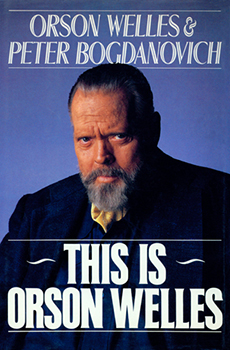
This Is Orson Welles is a 1992 book by Orson Welles and Peter Bogdanovich that comprises conversations between the two filmmakers recorded over several years, beginning in 1969. The wide-ranging volume encompasses Welles's life and his own stage, radio, and film work as well as his insights on the work of others. The book was edited after Welles's death, at the request of Welles's longtime companion and professional collaborator, Oja Kodar. Jonathan Rosenbaum drew from several incomplete drafts of the manuscript and many reel-to-reel tapes, most of which had already been transcribed. Much of the dialogue, however, had been rewritten by Welles, often in several drafts.

Daisy Miller is a 1974 American drama film produced and directed by Peter Bogdanovich, and starring Cybill Shepherd in the title role. The screenplay by Frederic Raphael is based on the 1878 novella by Henry James. The lavish period costumes and sets were done by Ferdinando Scarfiotti, Mariolina Bono and John Furniss.
Don Quixote is an unfinished film project written, co-produced and directed by Orson Welles. Principal photography took place between 1957 and 1969. Test footage was filmed as early as 1955, second-unit photography was done as late as 1972, and Welles was working on the film intermittently until his death in 1985. The film was eventually edited by Jesús Franco and was released in 1992, to mixed reviews.
The Miracle of St. Anne was a short film, now lost, made by Orson Welles. It served as a prelude to the play The Unthinking Lobster, which was written and directed by Welles as part of a collection of two one-act plays performed under the banner title of The Blessed and the Damned. The film consisted of the rushes (dailies) for a Biblical epic that was a film-within-the-play.
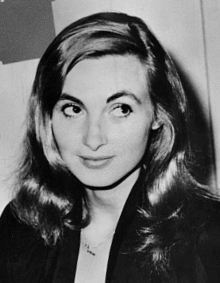
Paola di Gerfalco, Contessa di Gerfalco, better known by her professional name Paola Mori, was an Italian actress and aristocrat, and the third and last wife of Orson Welles.
Magic Trick is a short film made in 1953 by Orson Welles, for use in a show by magician Richard Himber. It involves Welles on-screen interacting with Himber off-screen as the two play a card trick, and would have been projected life-size during Himber's touring stage show in the 1950s.
Othello was a 1951 production of William Shakespeare's play of the same name, which was produced, directed by and starring Orson Welles in his first appearance on the London stage.

This is a comprehensive listing of the theatre work of Orson Welles.
There isn't one person, I suppose, in a million, who knows that I was ever in the theatre.

"Raising Kane" is a 1971 book-length essay by American film critic Pauline Kael, in which she revived controversy over the authorship of the screenplay for the 1941 film Citizen Kane. Kael celebrated screenwriter Herman J. Mankiewicz, first-credited co-author of the screenplay, and questioned the contributions of Orson Welles, who co-wrote, produced and directed the film, and performed the lead role. The 50,000-word essay was written for The Citizen Kane Book (1971), as an extended introduction to the shooting script by Mankiewicz and Welles. It first appeared in February 1971 in two consecutive issues of The New Yorker magazine. In the ensuing controversy, Welles was defended by colleagues, critics, biographers and scholars, but his reputation was damaged by its charges. The essay and Kael's assertions were later questioned after Welles's contributions to the screenplay were documented.
Beatrice Giuditta Welles is an American former child actress, known for her roles in the film Chimes at Midnight (1966) and the documentary travelogue In the Land of Don Quixote (1964). The daughter of American filmmaker Orson Welles and Italian actress Paola Mori, she is a former model, radio and TV personality, founder of a cosmetics line and designer of handbags and jewelry.

The authorship of the screenplay for Citizen Kane, the 1941 American motion picture that marked the feature film debut of Orson Welles, has been one of the film's long-standing controversies. With a story spanning 60 years, the quasi-biographical film examines the life and legacy of Charles Foster Kane, played by Welles, a fictional character based in part upon the American newspaper magnate William Randolph Hearst and Chicago tycoons Samuel Insull and Harold McCormick. A rich incorporation of the experiences and knowledge of its authors, the film earned an Academy Award for Best Original Screenplay for Herman J. Mankiewicz and Welles.













